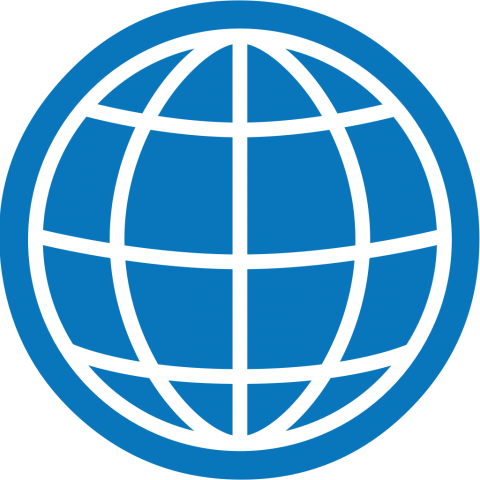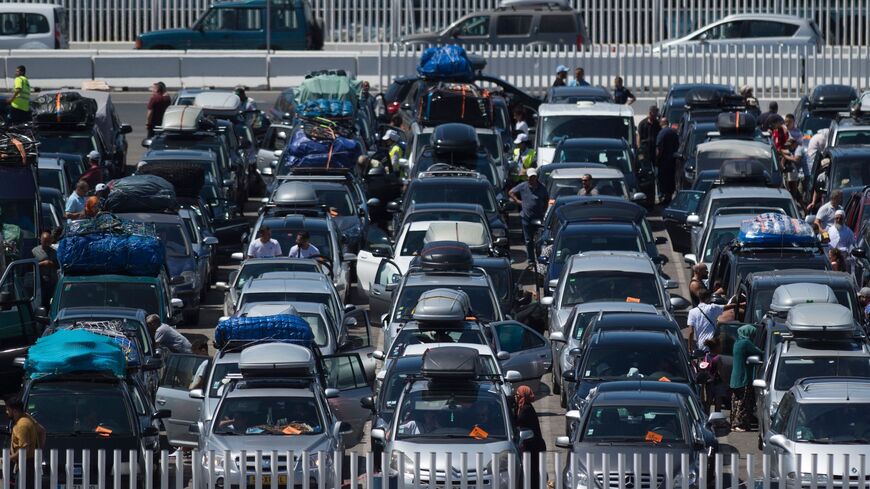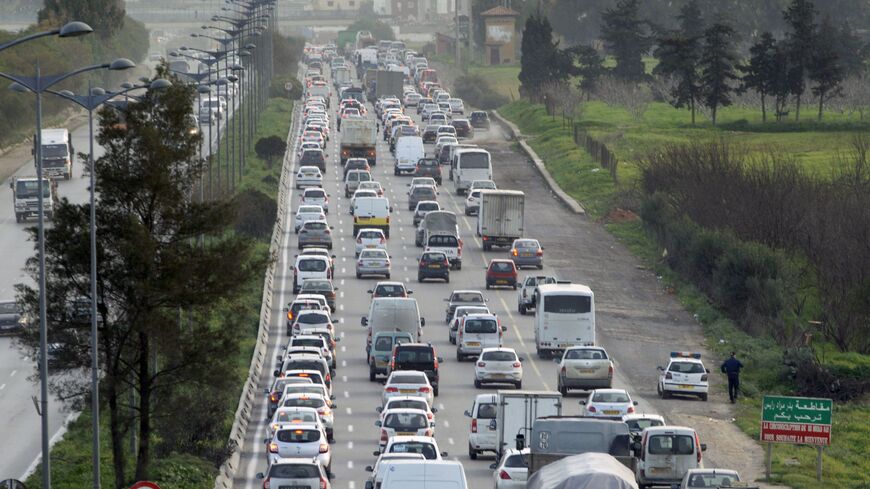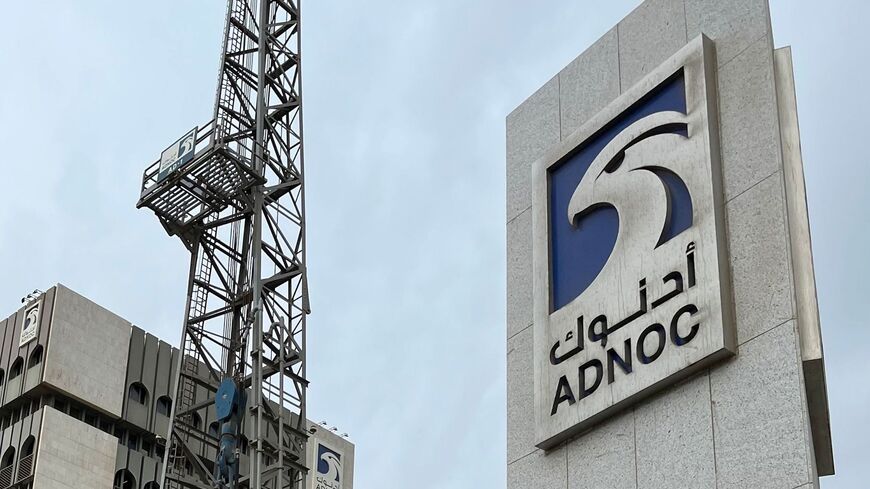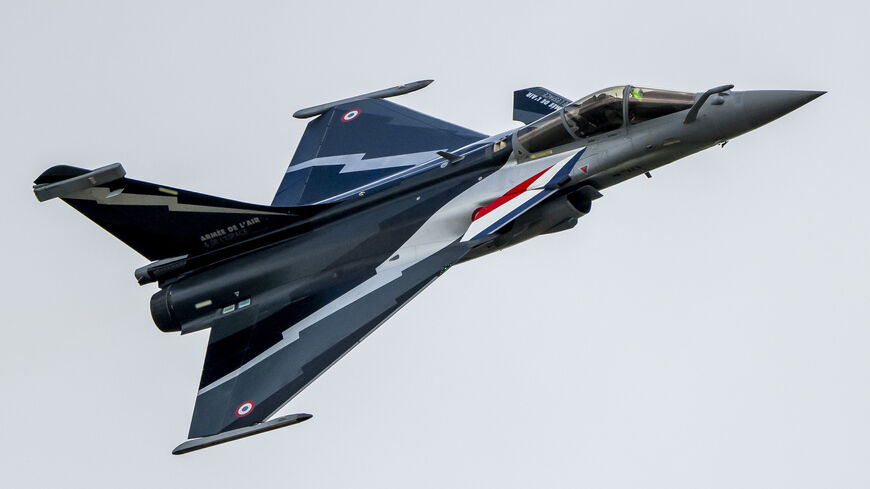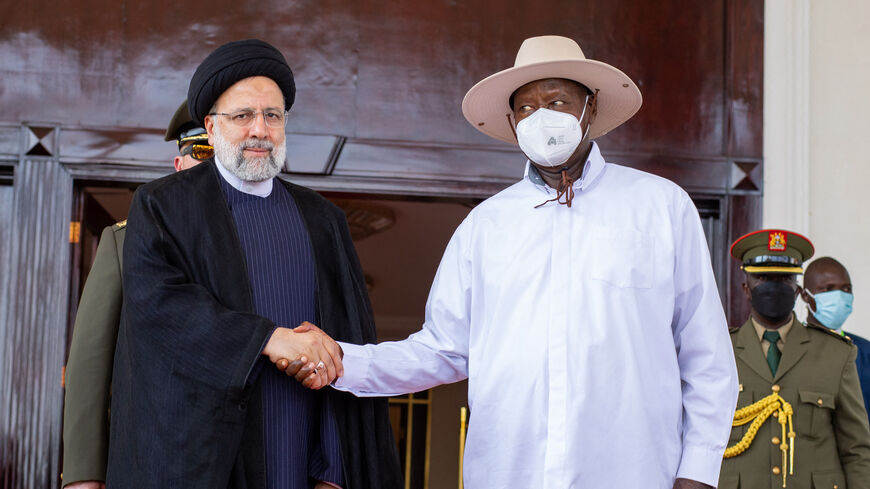Morocco to accelerate transition to EV manufacturing
Al-Monitor Pro Members
Francisco Serrano
Journalist and analyst specialized in North Africa
June 7, 2023
On May 15, Morocco launched its first-ever domestic car brand, Neo Motors. The development stems from a robust car manufacturing base that the kingdom has worked on establishing over the past two decades in partnership with global brands such as Renault and Stellantis. In 2022, sector exports rose by 33% year-on-year to Dh111.3 billion ($10.9 billion). But the long-term prospects for auto manufacturing in the country will hinge on an effective transition into the manufacturing of electric cars. Most companies have so far shied away from setting up shop in Morocco due to the absence of a dedicated electric car component industry, but a memorandum of understanding signed with Chinese electric-car battery manufacturer Gotion High Tech this week could change the lead if the investment fully materializes.
- Auto parts and component manufacturers first made their way into the Moroccan market in the 1990s, initially to supply Europe-based carmakers. This eventually flourished into a manufacturing ecosystem with the number of suppliers rising from 35 in 2000 to over 250 in 2020. Today, the industry employs roughly 220,000 people.
- The pivotal point was its ability to attract European manufacturers to set-up production plants in Morocco. The trend kicked off with French automaker Renault opening a factory in Tangiers, in northern Morocco, in 2012 and eventually expanding production units to Casablanca. Holland-based car-manufacturer Stellantis began operating a plant in Kenitra, near Morocco’s capital, Rabat, in 2019, where it builds three models under its Peugeot, Opel and Citroen brands.
- Renault’s Morocco operation produced 350,000 vehicles in 2022, compared to 303,591 in 2021. Stellantis’ Morocco site produces 200,000 vehicles annually. A 300 million euro ($322 million) investment program is set to double its output over the coming years.
- Since 2018, Morocco has become the African continent’s largest car exporter, overtaking South Africa. The kingdom has an installed capacity to produce 700,000 cars annually, but authorities want to raise output to 1 million cars over the next three to four years. Moroccan authorities aim to attract a third car manufacturer to the kingdom.
- Other initiatives are adding on production capabilities and notoriety. Neo Motors, the first fully Moroccan car manufacturer, unveiled its first model in mid-May — the NamX, an SUV set to be manufactured out of Neo Motor’s factory in Ain El Aouda near Rabat. The company has also developed a hydrogen-fueled prototype. Neo Motors will source from the local automotive industry (the NamX’s engine, for instance, will be manufactured at the Stellantis’ Kenitra factory). The company aims to sell 2,500 cars over 2023-2024 to gauge the market interest and map out its expansion plans.
- Another startup, British-Moroccan Atlas E-Mobility Group, has just announced plans to establish a production unit in Morocco and launch the first African-engineered electric vehicle in 2027.
- Morocco’s role in the transition to electric vehicles will determine the future weight of its automotive industry. Europe, which currently accounts for over 80% of Moroccan automotive exports, is on track to ban new combustion-engine cars starting in 2035.
- The transition will expose Morocco-based manufacturing to new competition. For years, the complexity level and large investments required to set up manufacturing of internal combustion engine vehicles acted as a barrier to entry for new competitors. By comparison, electric-vehicle manufacturing is relatively easier for firms to get into. This has opened the door for startups in the United States and especially in China to gain a footing in the global electric-car manufacturing market.
- Both Peugeot and Stellantis are transitioning to electric car manufacturing, and a part of this output already comes from Moroccan units. Stellantis currently produces 50,000 electric cars a year in its Moroccan units. Renault will start electric vehicle production in its Tanger factory this year. Cognizant of this shift, Moroccan industrial authorities want to double electric car output to 100,000 over the coming three years.
- Chinese electric car manufacturer BYD signed a deal with Moroccan authorities in 2017 to set up a factory in Kenitra. But the project has encountered delays and its completion remains far from certain. The BYD project would not only represent a third global-scale brand entering the Moroccan auto sector, but it would also accelerate the development of an electric vehicle manufacturing supply chain.
- The Ministry of Industry also announced plans in mid-2022 to develop a large-scale battery manufacturing plant and take advantage of local production of key battery components such as cobalt. However, this project is still awaiting commitments from interested investors to move forward.
- In early June, Moroccan authorities signed a memorandum of understanding (MOU) with Chinese firm Gotion High Tech to potentially set up a Dh65bn ($6.3 billion) electric battery plant in the kingdom. Although the MOU is only an initial step in the process, it could pave the way for the Chinese firm to make an investment decision in the near term and significantly add to Morocco’s electric vehicle supply cluster.
- Continued growth will be a key goal of industrial policy, given the sector’s importance for the Moroccan economy. Auto exports reached Dh111.3 billion ($10.9 billion) in 2022, according to figures by Morocco’s Office des Changes, a 33% increase on 2021. This made auto manufacturing the second biggest export sector, after phosphates and derived products (however, the latter were inflated by high global phosphate prices for most of 2022). Over the first quarter of 2023, auto manufacturing regained its position as Morocco’s first export segment, reaching Dh33.9 billion ($3.3 billion), a 44.8% increase compared to the first quarter of 2022.
- With most sales of Morocco-manufactured cars going to France, Spain, Germany and Italy, other markets such as Turkey, the MENA region and Africa have yet to be leveraged to their full potential. But Moroccan authorities will most likely want to keep the country’s position in European markets due to geographic proximity and levels of sophistication.
Scenario 1: Morocco auto manufacturing transitions successfully into electric vehicle manufacturing in the medium term.
The establishment of a domestic battery plant and other component producers encourages Renault and Stellantis to relocate more of their electric vehicle manufacturing to the kingdom. Morocco’s labor price competitiveness and proximity to European markets allows the kingdom to attract a third global car manufacturer.
Over the coming decade, Morocco moves away from manufacturing combustion engine cars, which gradually accounts for a residual amount of automotive output in the kingdom toward the end of the decade.
However, it is unlikely that Morocco will entirely transition away from building combustion engine cars in the medium-term. It has achieved a track-record in the sector, and keeping both electric and non-electric manufacturing over the long term would allow to meet demand in countries that are slower to transition to electric vehicles.
Scenario 2: Morocco’s transition into electric vehicle manufacturing stalls
Insufficient follow-through from domestic suppliers that fail to set up production of electric vehicle components in the kingdom increases the gap between electric manufacturing capabilities in Morocco and other electric car production centers. Without the establishment of a large-scale electric vehicle manufacturer as well as electrical component suppliers, European manufacturers in Morocco are reluctant to relocate more of their electric vehicle manufacturing capacity to the kingdom.
This leaves Morocco’s auto manufacturing sector dependent on combustion engine vehicle production, making it lose steam in European markets. Demand in Africa and the Middle East allows Morocco to continue automotive exports, but these are limited to less sophisticated markets where the transition to electric cars is slower to take off.
Given its proximity to European markets, labor cost competitiveness relative to Eastern Europe and its growing forays into electric car manufacturing, it seems unlikely that Morocco will not maintain a foot in the electric car sector over the coming decades.
Electric vehicle manufacturing expands in the kingdom, but combustion engine production remains significant.
Morocco leverages its position as a gateway location for European and African markets. Over the coming years, it is able to set up an electric battery production unit either through its partnership with Gotion High Tech or with another manufacturer, which encourages suppliers and manufacturers to increase investment in electric vehicle production in the kingdom, raising output.
To maintain sector growth, Morocco will keep one foot in each segment: accelerate electric vehicle production for markets that are quickly decarbonizing, but also service automotive demand in countries where sales of combustion engine vehicles continue to grow.
This allows car manufacturing in the kingdom to evolve with the transition into electric but also continue to add industrial jobs as exports continue to grow. The shift is also expected to have a knock-on effect on mining activity in the kingdom, as cobalt and phosphate reserves become key assets for domestic electric car battery manufacturing.
Francisco Serrano is a writer and analyst who focuses mainly on North Africa. He has been published in several outlets, including Foreign Policy, World Politics Review and the Middle East Institute. His second book, "As Ruínas da Década," about the past decade in the Middle East, was published in March 2022.
We're glad you're interested in this memo.
Memos are one of several features available only to PRO Expert members. Become a member to read the full memos and get access to all exclusive PRO content.

Already a Member? Sign in
The Middle East's Best Newsletters
Join over 50,000 readers who access our journalists dedicated newsletters, covering the top political, security, business and tech issues across the region each week.
Delivered straight to your inbox.
Free
What's included:
Free newsletters available:
- The Takeaway & Week in Review
- Middle East Minute (AM)
- Daily Briefing (PM)
- Business & Tech Briefing
- Security Briefing
- Gulf Briefing
- Israel Briefing
- Palestine Briefing
- Turkey Briefing
- Iraq Briefing
Premium Membership
Join the Middle East's most notable experts for premium memos, trend reports, live video Q&A, and intimate in-person events, each detailing exclusive insights on business and geopolitical trends shaping the region.
$25.00 / month
billed annually
$31.00 / month
billed monthly
What's included:
Memos - premium analytical writing: actionable insights on markets and geopolitics.
Live Video Q&A - Hear from our top journalists and regional experts.
Special Events - Intimate in-person events with business & political VIPs.
Trend Reports - Deep dive analysis on market updates.
We also offer team plans. Please send an email to pro.support@al-monitor.com and we'll onboard your team.
Already a Member? Sign in

